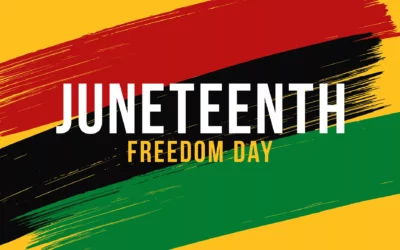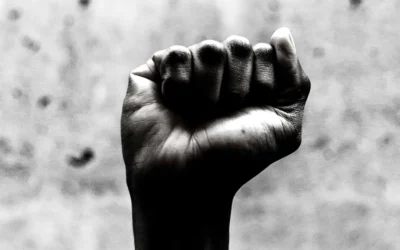AFTER HALTING RAPID RISE IN HOMELESSNESS, BIDEN-HARRIS ADMINISTRATION ANNOUNCES PLAN TO REDUCE HOMELESSNESS 25% BY 2025
“All In” Is the Most Comprehensive Federal Plan to Systemically Prevent Homelessness and Address Racial and Ethnic Disparities in Homelessness
Today, the Biden-Harris administration released a federal plan for ending homelessness in America that starts with the ambitious goal of reducing homelessness 25% by 2025. All In: The Federal Strategic Plan to Prevent and End Homelessness builds on the success of previous plans and will do more than any previous federal effort to systemically prevent homelessness and combat the systemic racism that has created racial and ethnic disparities in homelessness.
“My plan offers a roadmap for not only getting people into housing but also ensuring that they have access to the support, services, and income that allow them to thrive,” said President Biden. “It is a plan that is grounded in the best evidence and aims to improve equity and strengthen collaboration at all levels.”
President Biden encourages state and local governments to use All In, which was developed by the U.S. Interagency Council on Homelessness (USICH), as a blueprint for creating their own plans to prevent and end homelessness and setting their own ambitious goals for 2025.
All In recommits the federal government to strategies that have been proven to work, like “Housing First”—the model of care that treats housing as the immediate solution to homelessness, but not the only solution. Once housed, many people need support to stay housed—from health care and job training to legal and education assistance. This model works because it treats people with dignity, personalizes their care, and recognizes that—without housing—every other aspect of a person’s life suffers.
The release of the plan coincides with the week of Homeless Person’s Memorial Day, which commemorates the people who have lost their life while living without a home. People who experience homelessness die nearly 30 years earlier than the average American and at the average age that Americans died in 1900. All Inresponds to homelessness like a life-and-death crisis rooted in housing and health problems—not a crime for the justice system to solve.
While homelessness is deadly, it is also preventable. The pandemic proved the power of prevention: The Biden-Harris administration’s response to COVID—including emergency rental assistance for people at risk of eviction and direct cash assistance for most Americans—prevented millions from losing their homes and kept evictions at pre-pandemic levels. All In aims to further fix systems and failed policies in order to prevent homelessness, or the risk of it, long before it happens.
All In was built from the ground up and shaped by public input from more than 500 people who have experienced homelessness as well as leaders, providers, advocates, developers, and other partners from more than 600 communities, tribes, and territories. The plan is based on more than 1,500 online comments and more than 80 listening sessions that told USICH the federal government needs to:
- Urgently address the basic needs of people in crisis;
- Expand the supply of and access to affordable housing and high-quality support;
- Build better systems to prevent people from losing their home in the first place;
- Collaborate across sectors, systems, and jurisdictions;
- Rely on data and evidence that show what works; and
- Include people who have experienced homelessness in the policymaking process to dismantle systems that create disparities.
“Nobody—no veteran, no American—should experience homelessness in the greatest country in the world,” said Veterans Affairs Secretary Denis McDonough, the chair of USICH, which developed All In with 19 federal agencies. “Together, we’ve driven down veteran homelessness by 55% since 2010, showing that we know how to tackle this issue if we all work together. Under President Biden’s leadership, we are going to build on that momentum and drive toward the day when every American has a good, safe place to call home.”
After the Obama-Biden administration released and implemented the nation’s first federal strategic plan to prevent and end homelessness, homelessness steadily and significantly dropped from 2010 to 2016. Since 2016, homelessness has been on the rise. But after two years of unprecedented federal investment, the Biden-Harris administration has begun to halt the rapid rise and now has a plan to reduce homelessness 25% by 2025. According to the 2022 Annual Homelessness Assessment Report (AHAR)—which reveals the pandemic’s impact on homelessness and was released today by the Department of Housing and Urban Development (HUD)—582,462 people were experiencing homelessness on a single night in January. That represents an increase of 2,034 people—less than 1% since before the COVID-19 pandemic began in 2020.
“Everyone deserves a safe and stable place to call home. After years of steep rises in homelessness and amid historic challenges that included a global pandemic, the data show that we can make progress even under the most difficult circumstances,” said HUD Secretary Marcia Fudge, who served as chair of USICH during the development of All In. “We have a long way to go with systems to fix however the Biden-Harris administration’s historic investments represent our commitment to addressing homelessness and the underlying racial inequities. All In is our action plan to speed up the progress.”
In the last two years, the Biden-Harris administration has made unprecedented efforts to end homelessness, which include the White House Housing Supply Action Plan that aims to close the housing supply gap in 5 years; the American Rescue Plan that President Biden signed to deliver one of the largest investments in ending homelessness in U.S. history; and the House America initiative that is on track to find permanent housing for more than 100,000 people experiencing homelessness and add more than 20,000 units of affordable housing into the pipeline by the end of this month.
Although overall homelessness remained flat from January 2020 to January 2022, unsheltered homelessness—which includes people living in cars and tents—rose by 3%. As homelessness has become more visible, there has been a troubling rise in state and local laws that criminalize and exacerbate homelessness by making it illegal for people without a home to do certain activities in public that are otherwise legal in the setting of a home: sleeping, sitting, eating. All In serves as a more effective alternative to criminalization.
Today, USICH and the White House also announced a new initiative to help cities and states reduce unsheltered homelessness. The 19 federal agencies that make up USICH will work with select state and local governments to accelerate the implementation and effectiveness of strategies to get people off the streets and into homes.
“Housing should be treated as a human right,” said USICH Executive Director Jeff Olivet. “Many Americans ask, ‘Is it possible to end homelessness?’ The answer is, yes, the United States can end homelessness by fixing systems—not by blaming the people being failed by them. With All In, the Biden-Harris administration outlined a set of strategies and actions for doing just that. Now we must scale what works and develop new and creative solutions to build a future where no one experiences the tragedy and indignity of homelessness—and everyone has a safe, stable, accessible, and affordable home.”
“The evidence shows that stable housing is essential to health and well-being. Like many health conditions, homelessness is preventable, and I am proud to be part of an administration that acknowledges the power of prevention,” said HHS Secretary Xavier Becerra, who serves as vice chair of USICH.
USICH will host webinars in 2023—starting in January—to help partners and communities use All In to develop local and systems-levels plans to prevent and end homelessness, set state and local goals to reduce homelessness by 2025, hold the federal government accountable, and learn more about federal programs, strategies, and actions to prevent and end homelessness.
This blog post was originally a press release published on The United States Interagency Council on Homelessness website









